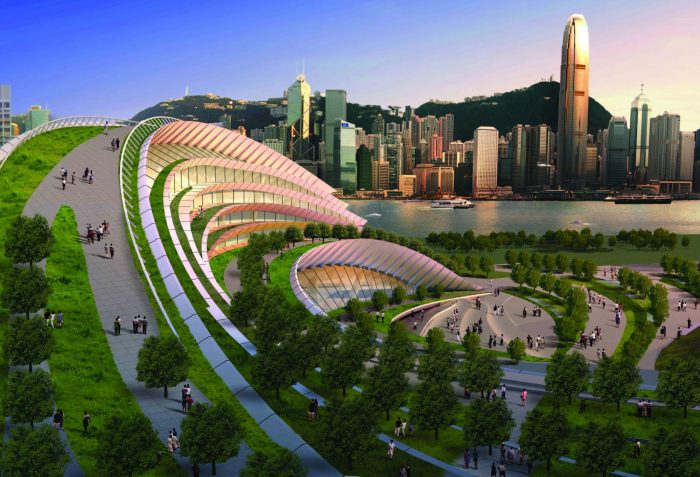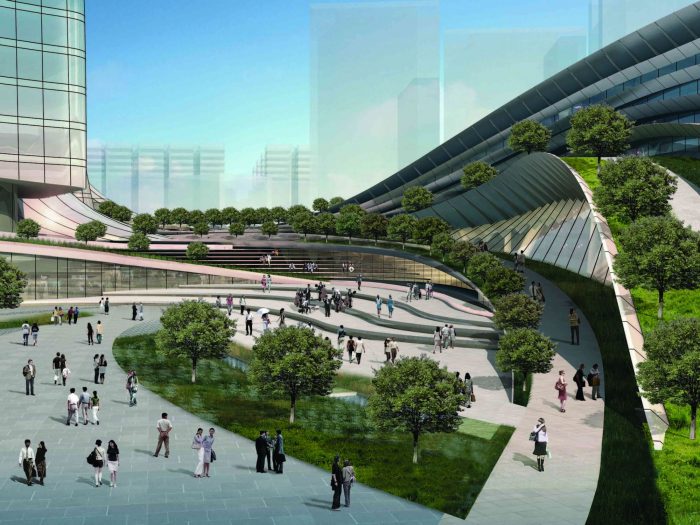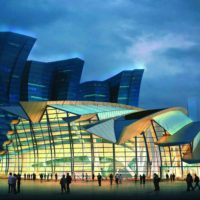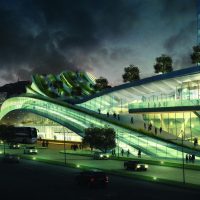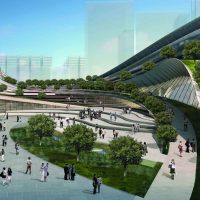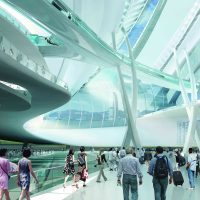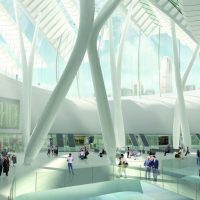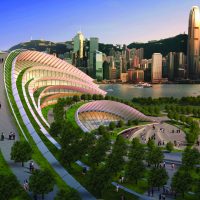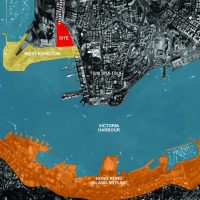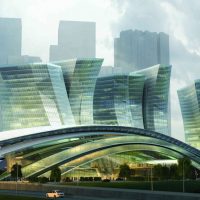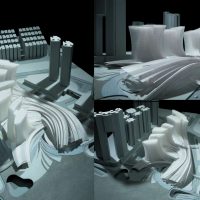One more impressive design from Aedas, the Express Rail Link West Kowloon Terminus in Hong Kong is a new rail station that connects the city to the National High Speed Rail Network, and it is expected to strengthen the city’s strategic position as the southern gateway of China. The project won the Best Futura Mega Project in MIPIM Awards 2012, and the construction will be completed in 2015 to be largest under ground terminus station in the world
The Terminus is a 430.000 square meter structure, equipped with 15 high speed rail tracks, the terminus will access an underground tunnel to connect to the Pearl River Delta and the rest of the mainland. The design is characterized by arching fins, abundant natural day-lighting, and covered with pedestrian paths and green roofs. For more images and architects description continue after the jump:
From the Architects:
The West Kowloon Terminus functions as an indicator of how relations have improved between Hong Kong and mainland China. The high-speed rail terminus station will connect Hong Kong to Beijing with the largest rail network in our history. Located centrally in Hong Kong within the city’s urban realm, the 430,000 square meter facility, equipped with fifteen tracks, will be the largest below ground terminus station in the world.
The WKT will function more like an international airport than a rail station as the Hong Kong Special Administrative Region maintains economic and political differences from P.R.C. This means that the facility needs to have both custom and immigration controls for departing and arriving passengers. What is highly unusual in this facility is that the West Kowloon Terminus will have immigration domains for both Hong Kong and China in the same facility, as opposed to how immigration works in a typical international airport, which only serves the host country.
The site’s proximity to the future West Kowloon Cultural District and to Victoria Harbor required a design which was highly influenced by civic demand. Adding to the challenge was the construction of a 400,000 square meters of commercial development on top of the station, which would be auctioned off to a developer at a later date.
As the “gateway” to Hong Kong, it was considered vital to connect the station with the surrounding urban context and make one aware of the city’s character whether arriving or departing. In order to do this, the design efficiently compacted all of the supporting space to allow for a large void down into the departure hall below, with added apertures going down to the track platforms. The outside ground plane bends down to the hall and the roof structure above gestures toward the harbor. The result is a 45 meter high volume which focuses all attention to the south façade with views of the Hong Kong Central skyline, Victoria Peak and beyond.
The terminus station has both regional commuter trains and long-haul high speed trains. The commuter trains go across Hong Kong to Shenzhen, a booming Chinese border city, and further North to Guangzhou, the capital of Canton. Research performed on civil engineering concluded that based on the urban make-up and internal site restrictions, the short haul tracks needed to be placed on the western side of the site, and the long-haul on the eastern side. The locations of these tracks were thus fixed. In addition, research showed that 80% of the station users are short-haul commuters, pressuring the design to reduce travel times for these passengers as much as possible.
Courtesy of Aedas
The “baseline” scheme had segregated immigration, which seemed to make sense from a territorial point of view. However, this caused great inefficiencies within the planning diagram. The solution was to stack territories so that all immigration facilities for arrivals would be on one floor and all departure facilities on another. This made the inner workings easier and more efficient. Locating the immigration facilities over the short-haul tracks significantly reduced station travel time for short-haul passengers. Their location being well beneath the density of the future commercial spaces optimizes the openness of the void and the entrance building on the opposite side of the site.
Credits:
Structural, Fire Safety, Civil and Geotechnical Engineer: Aecom
Building Services Engineer: Meinhardt
Structural Engineer, Façade Performance – Entrance Building: Buro Happold
Sustainability Consultant: Buro Happold
Landscape Architect: Aecom
Quantity Surveyor: Widnell
Traffic and Transport Engineer: MVA
Rail and Transport Planning Advisor: Systra
Project: Express Rail Link West Kowloon Terminus Hong Kong
Designed by Andrew Bromberg of Aedas
Project Manager: Aecom
Area: 430 000 sqm
Location: Hong Kong, China
- access to the station from the civic plaza
- access to the station from the north
- civic plaza
- interior of departure hall
- interiors
- rooftop park with the view of Hong Kong skyline
- site location
- south view of the station and the proposed commercial development
- study model
Courtesy of Aedas


